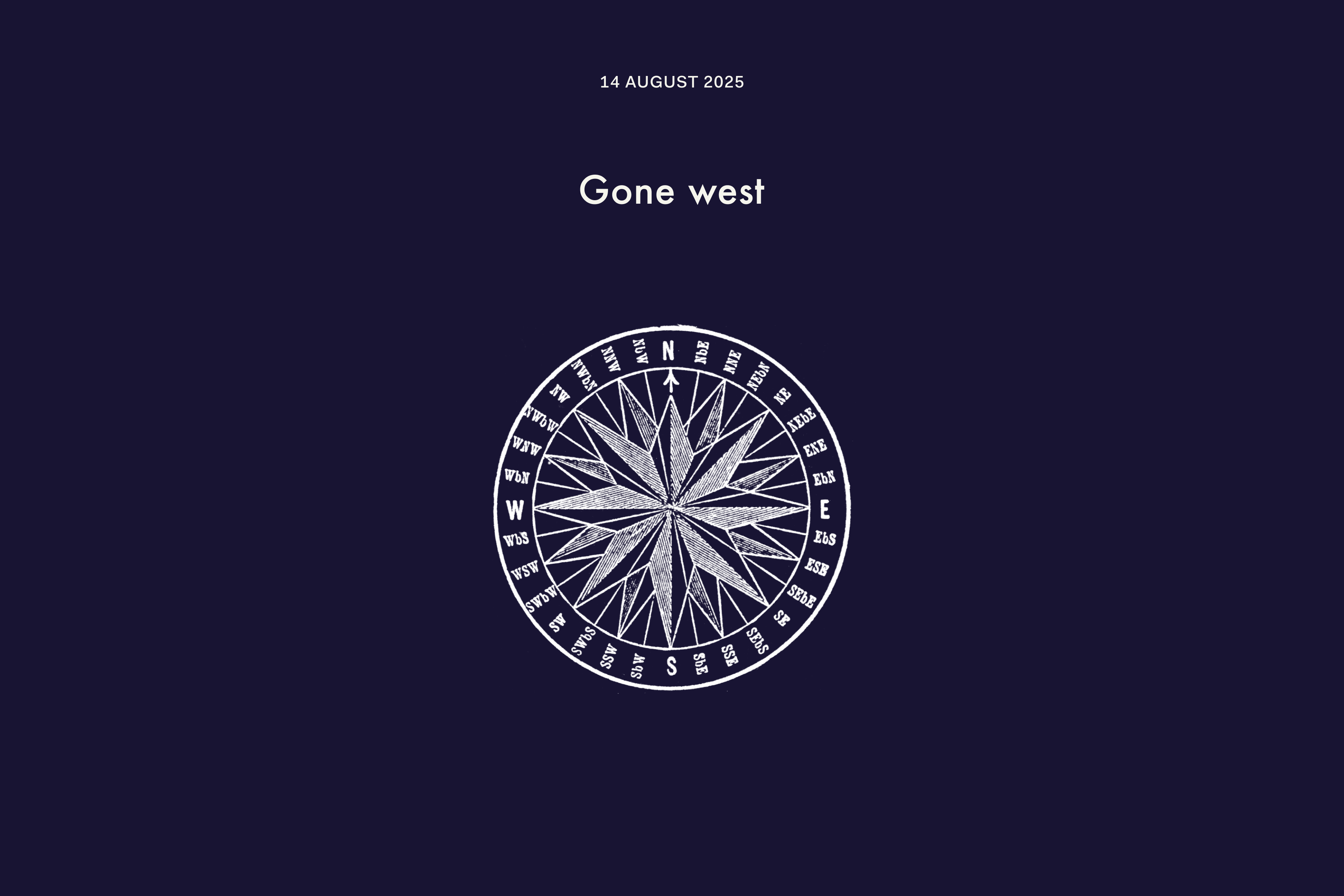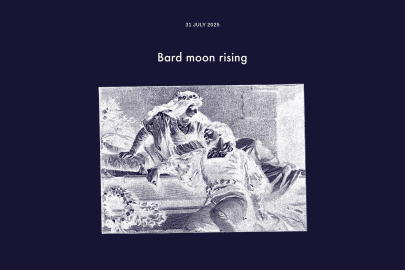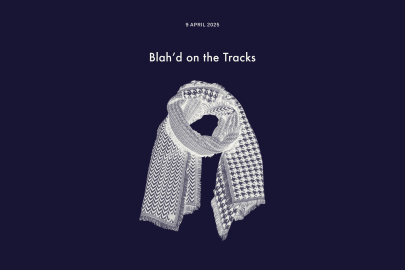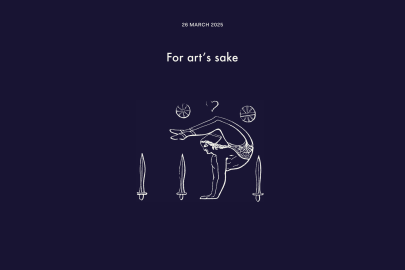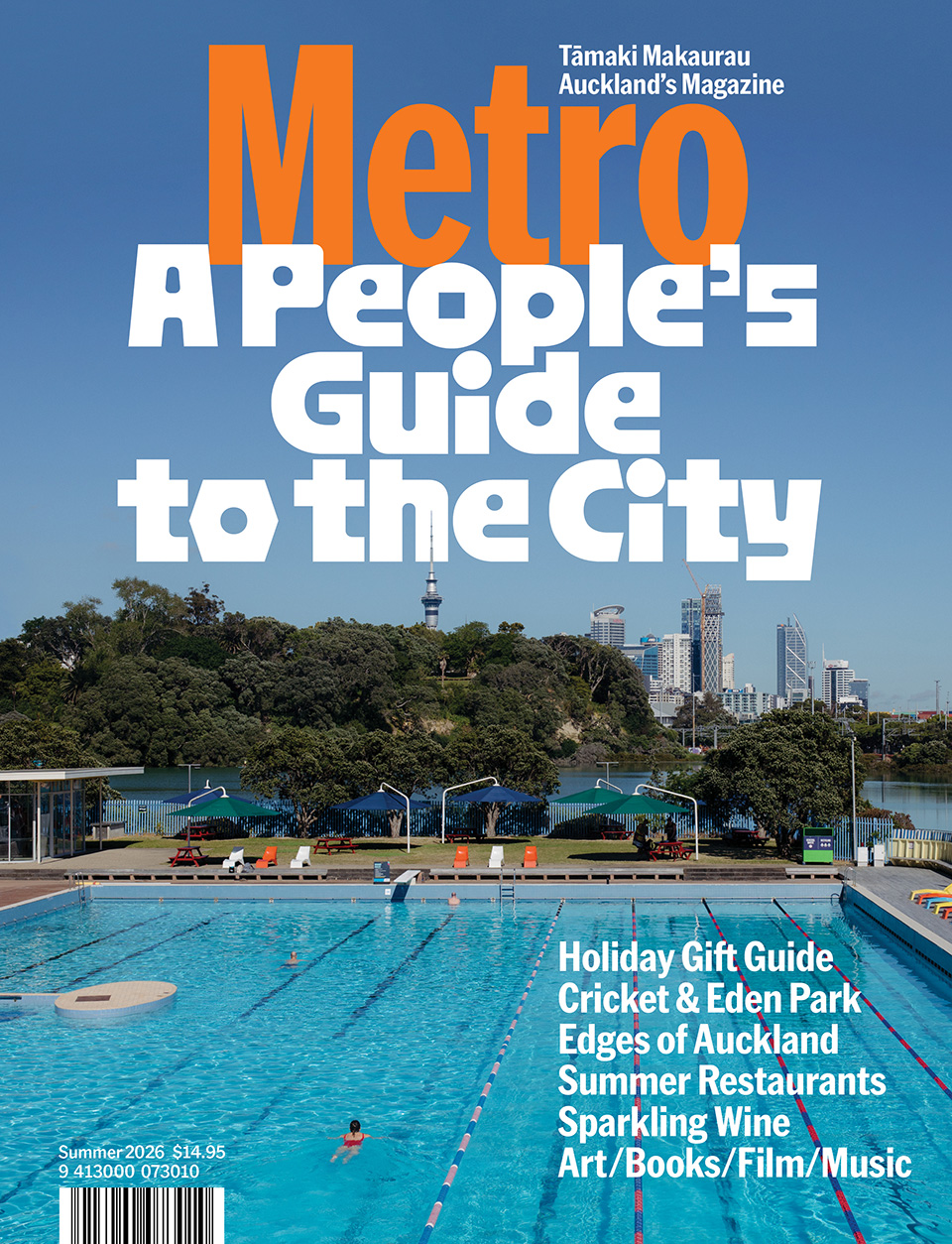Aug 14, 2025 Metro Arts
In another loss to the local arts scene (following the departure of the editorial team behind Art News and The Art Paper* covered a couple of weeks ago), Te Uru’s curator James Gatt is leaving Titirangi gallery Te Uru to return to his homebase of Sydney. James’s departure is a real loss for Te Uru (and Tāmaki Makaurau), which has gone from strength-to-strength since both Gatt and director AD Schierning joined the gallery two years ago.
Rather than letting him slip out of the country quietly (I should mention that the gallery has a few months of Gatt-curated shows to come, a couple of which sound particularly enticing, but you’ll hear more about those in due course) we thought we’d force him to answer some questions about his time here.
Metro: Oh no — you’re leaving! Why? What are you doing next?
James Gatt: It was a very tough decision. I’ve loved making exhibitions in Tāmaki, intended to stay longer, and will miss a lot of very good people. Unfortunately my personal circumstances have changed, making it untenable. We often ignore the personal costs of maintaining a practice or career. I’m heading home to Sydney to spend time with family and friends, do some research, and work independently on exhibitions and publishing until the right opportunity presents itself. I’m particularly keen to be reunited with my dog, Alto, who I’ve missed terribly. I certainly won’t be closing the door to this remarkable art community, and am excited to continue the many rich conversations I’ve initiated with artists and colleagues here.
What drew you to Te Uru? And how has it been different to what you expected?
I visited Te Uru for the first time with Peter Robinson in 2018. We drove out to Piha and stopped along the way. It reminded me of time spent on Naoshima Island where the remote location, Tadao Ando’s architecture, and the natural landscape coalesce for truly moving experiences of art (to this day, it’s my favourite place to view Monet’s Lilies and Sugimoto’s seascapes). Te Uru presented an opportunity to make exhibitions in a similar context without having to go too much further abroad. I was also eager to spend consistent time with local artists and colleagues, having long admired the sophistication of their practices from across the ditch. Artists from Aotearoa are second to none and deserve a lot more support—I often imagine how truly radical the art scene could be here if this sophistication was fully embraced. It’s immediately obvious when arriving here that support infrastructure is lacking and specialist advice isn’t always followed.
How is Te Uru different to what it was two years ago?
It’s changed drastically since I arrived in 2023. Our Director AD assembled a dedicated team, and under her directorship we have all worked very hard to realise the full potential of this special place. With so few comparable buildings in Aotearoa or Australia, we realised that we had a responsibility to make the most of Tamaki’s second-largest public gallery, and set about building an ambitious programme. AD and I developed a new curatorial strategy; expanded the footprint for all exhibitions; initiated a series of dialogue exhibitions, pairing local and international artists; established a wonderful group of patrons called the Te Uru Benefactors Collective; launched a new website; initiated a new series of publications; opened partnership opportunities with Australian colleagues, notably for our Visiting Curators Programme in collaboration with UNSW Galleries; developed more sustainable systems, including for exhibition design; and brought greater attention to the local practices and histories. It’s well noted by the community that these efforts have been greatly appreciated—people want thoughtful programming.
What’s been your impression of the Tāmaki art scene over the last two years and how does it compare to Sydney?
The biggest difference is greater actioned respect in Aotearoa for indigenous cultures and conceptual practices. There are often several excellent exhibitions on at once in Tāmaki, which isn’t always the case in Sydney. I find the discourse here rigorous and stimulating. Artists are leading this. Commercial galleries play a big role, too—amazing how the efforts of relatively few people can have such impact. A bigger population and greater resourcing hasn’t produced a more sophisticated art ecology in Sydney—that’s for sure—but work cultures in Australia are definitely healthier and systems generally are far more efficient (no doubt because of money). There’s a certain density to the art scene in Tāmaki, which means you meet key players quickly and that relationships and conversations in the community can be intense (sometimes for the better, sometimes not). Melbourne has similarly intimate networks, whereas people in Sydney tend to operate more independently. Friends and colleagues in Australia have often commented on the rigour in Aotearoa. I hate to oversimplify it, but it does seem that added pressure has produced diamonds. The art world in Aotearoa often feels too big or weighty for this place, which means it necessarily spills into international contexts.
What have you got planned for the rest of your tenure (even if you’re not here for the openings)?
I will be seeing out my final three exhibitions with Anoushka Akel, Fatma Bucak, and Campbell Patterson. I’ve been speaking with Anoushka for years and very excited to finally be working together. She’s one of my favourite painters. I’ve followed Fatma’s practice for a few years, specifically her ongoing work Damascus Rose (2016–) and am delighted she agreed to make her first exhibition in Oceania at Te Uru. Once I started looking into Campbell’s video archive, I became obsessed—it feels like the perfect time to be presenting these subversive works to people. I’ve initiated projects for next year, too, but will be handing them over to Te Uru’s next curator.
When you look back on your time here, what’s the first work you’ll think of?
Great question! Impossible to answer, though. Many come to mind, for different reasons. The first exhibition I programmed for Te Uru was Ava Seymour’s Domestic Wild, so I’ll always have very fond memories of that project—special, too, because Ava has become a dear friend. Her and Peter Robinson have taken very good care of me while I’ve been in Tāmaki, which has made a huge difference and kept me going. They care deeply about the art community and are always showing up for others. I really respect that, and will miss them the most. It will be hard to beat working with Shannon Te Ao—conversations with him are precisely why I got into the art world in the first place. While working on his exhibition at Te Uru, he said something that will stay with me forever: ‘art isn’t just about concepts, it’s also about care.’ Simple, I know, but for a pretty staunch conceptualist like me, it really hit. I’m so pleased to have connected with Tina Barton, who has been a guiding light and friend. Her programme at the Adam was one of the few in the region I followed religiously. Stephanie Post, Kenneth Brummel, Nathan Pōhio, Sarah Hopkinson, Michael Lett, and Tony Kerridge also made me feel welcome and supported, and ensured I was having fun sometimes, too! I’m leaving also with a lot of respect for the people behind Treadler—Felix, Sally, Shiraz, Rea, and Meg—and the group of younger artists in their orbit. Without initiatives like this, the art world quickly becomes stale. It takes selflessness and a great deal of energy to get these operations off the ground, especially when you don’t have a lot of money behind you—I know, I’ve done it many times.
A lot of invisible, unpaid labour keeps the art world humming and the community connected. It’s taxing, for sure, but I can’t help smiling when I think of how beautiful it is.
What’s On
Metro x Auckland Phil
Bic Runga with Auckland Phil
7.30pm, Saturday 6 September
Aotea Centre
Bringing together the soul-stirring vocals of Aotearoa’s most-awarded solo artist with a 50-piece professional orchestra, Bic Runga with Auckland Phil will be an exceptional evening of musical fusion, featuring beloved classics such as ‘Something Good’, ‘Precious Things’, ‘Bursting Through’ and more reimagined with the power of a full orchestra.
Add this sensational concert to the soundtrack of your life.
Urgent Fundraiser For Global Movement To Gaza
St. Kevin’s Arcade
6pm, Saturday 17 August
A joint effort in compassion — this fundraiser is for a delegation aiming to join the Global Movement to Gaza, alongside Sumud convoy and organisers from the Freedom Flotilla. All proceeds will be going towards the primary goal of purchasing a boat for the delegation, supporting the sending of trained volunteers and procuring more aid for the people of Gaza. With performances by Rana Hamida & the Habibi Orchestra and Geneva AM. If you can’t make it you’re still able to donate with a virtual ticket.
Tiny Ruins
Roundhead Studios
SATURDAY 23 AUGUST
Neil Finn’s Roundhead Studios has been quietly making winter the most bearable season yet with the Infinity Sessions. Bic Runga, Troy Kingi, The Beths, The Don, Mr Finn himself. It’s been a grand tour through some of the most prodigious bandiers of New Zealand music. Tiny Ruins being absolutely no exception — over a decade into a career of delicate and artful songwriting, composition and performance. Plus as you’d expect, the sound at Roundhead is exceptional.
Metro x Basement Theatre
Basement Theatre are re-introducing their paid membership programme, Basement Mates, now with even more benefits and more ways to be involved with your favourite little theatre.
Being a Basement Mate means that Basement Theatre is your official third place. You’ll be a true Basement local and have a closer connection with Tāmaki Makaurau’s underground and oh-so-cool live arts community.
On Display
Darcell Apelu, Martha Atienza, Heidi Brickell, Buck Nin, Yee I-Lann : The tongue to them
Artspace Aotearoa
26 JULY – 4 OCTOBER
Quite the group show really. An investigation of colonial impact linked by a shared family of Austronesian language with works from Aotearoa, Malaysia and the Philippines. The exhibition prods at the concept of language as a tool of resistance and asks: If language shapes how meaning is made, what conversations can be had between groups who share a root tongue?
Yana Dombrowsky-M’Baye: Souconna
Grace Aotearoa
14 AUGUST – 13 SEPTEMBER
Yana Nafysa Dombrowsky-M’Baye is a multidisciplinary researcher and educator from Tāmaki Makaurau with ancestral roots in Sénégal, France and Poland and the Czech Republic. Working with moving image, site-specific installation, and the fabrication of spirited objects, Yana’s practice is a poetic inquiry into the material and immaterial conditions of belonging.

